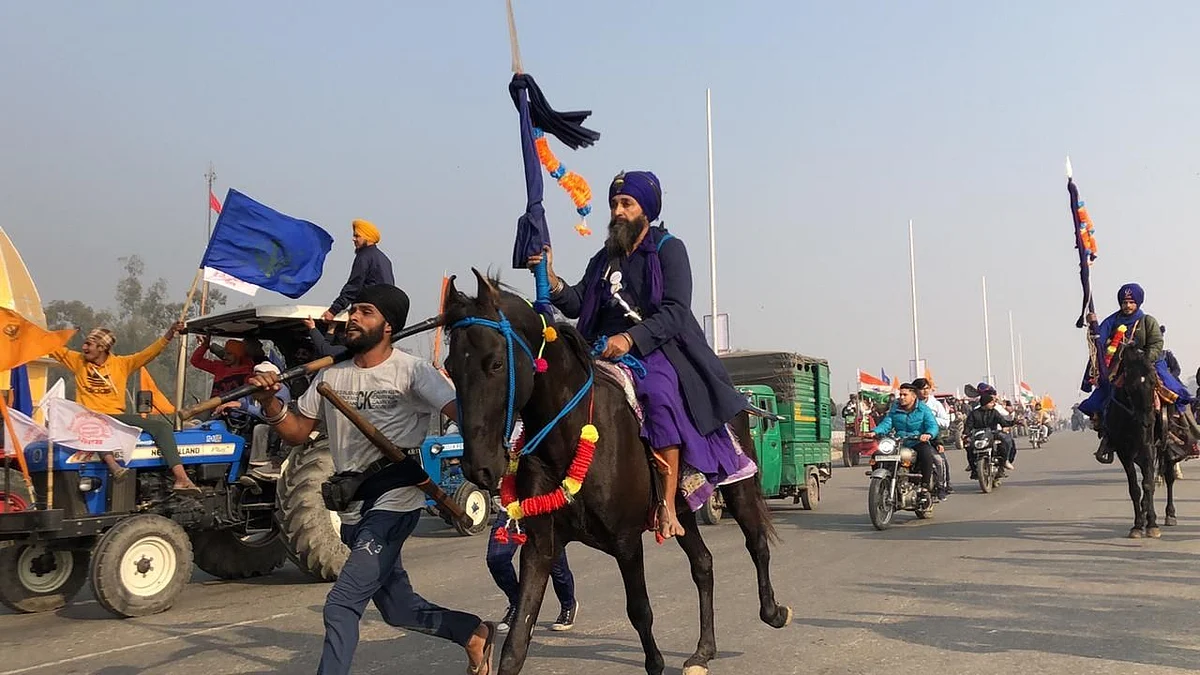Nihang Sikhs, Blue-Clad Warriors, Escort Tractor Rally on Horses
Nihangs consider it their duty to defend the people and faith in times of conflict or struggle.

advertisement
Video Producer: Shohini Bose
Video Editor: Deepthi Ramdas
The involvement of Nihang Sikhs – the armed warriors clad in blue – has been a major highlight of the farmers’ protest against the Narendra Modi government’s three farm laws.
So, their presence – not on tractors, but on horsebacks – was not a surprise as agitating farmers at Delhi’s borders undertook a tractor rally on Tuesday morning as India celebrated its 72nd Republic Day.
Close to Singhu Border, hundreds of Nihang Sikhs rode towards the national capital alongside farmers on foot and tractors.
Every protest site has a separate section where Nihangs – or Guru Di Ladli Fauj (Guru’s beloved army) – keep their horses and weapons.
Who Are Nihangs and Why Are They Part of Farmers’ Protest?
The roots of the word Nihang is said to be in a phrase in Persian for a ferocious, mythical sea creature. It is believed that Mughal historians compared the ferocity of Sikh warriors with crocodiles.
They are said to have emanated from Guru Hargobind’s Akal Sena.
The particular shade of blue that Nihangs wear is said to have been chosen by Guru Gobind Singh. In addition, they wear bracelets of iron around their wrists (jangi kara) and steel discs in their turban. Traditionally, they are also supposed to carry one or two swords.
As a result, Nihangs often take part in farmers’ agitation.
The presence of Nihangs is a source of immense security for lay protesters, who are aware of the historical role of Guru di Ladli Fauj.
(At The Quint, we question everything. Play an active role in shaping our journalism by becoming a member today.)